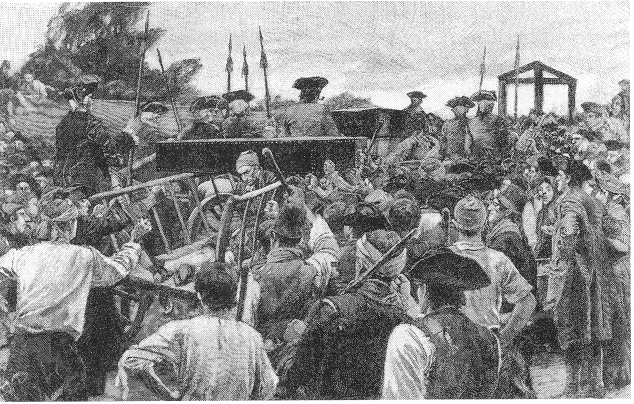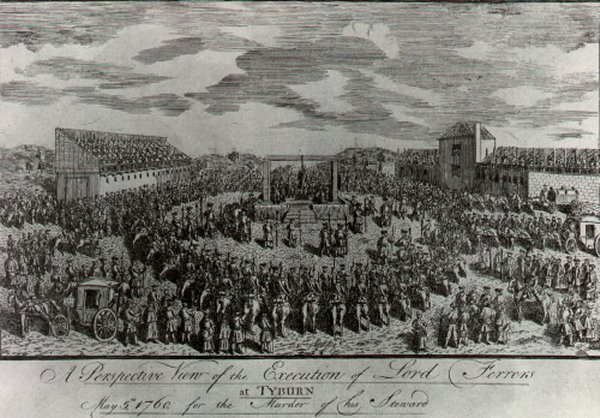When a man was going to his death from Newgate Prison, he would be taken to Tyburn in a manner like the picture above. A crowd of ordinary people would follow the cart carrying the condemned man and his coffin to the gallows [1]. If the road to the tree at Tyburn was long, the cart would sometimes make stops at public houses for ale and spirits, where the prisoner might converse with friends and family [2].
Once at Tyburn, crowds formed around the gallows; hanging was quite a public event, as one can see from the picture below. Despite the fact that public executions were meant to deter crime by displaying the horrible punishment for it, they actually allowed for further crime, such as pick-pocketing and rioting [3]. Many people recognized the contradictive atmosphere. Henry Fielding wrote about the ineffectiveness of public executions as a crime deterrent, and suggested alternative means of carrying out executions. He believed punishments should be carried out as soon as possible, so the crime is the focus of the execution, not the punishment. It should be carried out in semi-private, as this would be more effective in instilling fear; mystery inspires dread. Finally, the event should be solemn to maintain the desired impression and produce the desired result. Fielding's suggestions for reform did bring about some changes in the legal system [4].
One can find evidence of the popularity of public executions in the number of terms that emerged in the 18th century to describe the event of a hanging day: the hanging match, hanging fair, Paddington Fair, collar day, and Sheriff's Ball. "To hang was 'to swing,' 'to dance the Paddington frisk,' 'to morris,' 'to go west,' 'to ride up Holborn hill,' 'to dangle in the Sheriff's picture frame,' 'to dry cockles,' 'to ride a horse foaled by an acorn'" [5], and the list continues.


